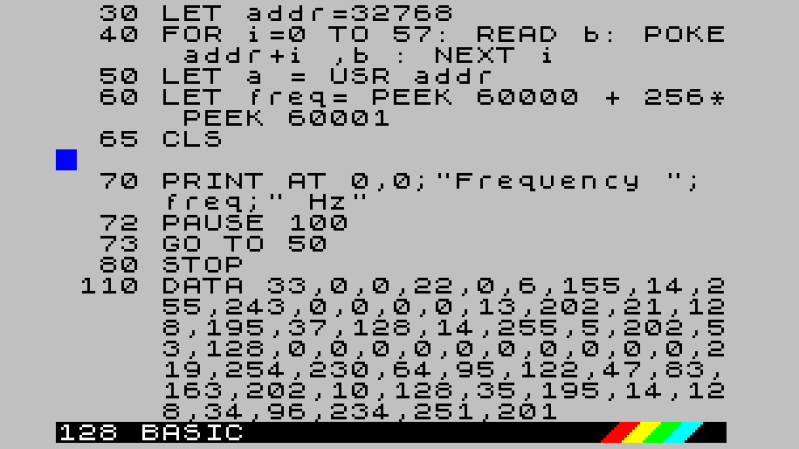EasyDMARC Integrates With Pax8 Marketplace To Simplify Email Security For MSPs
Originally published at EasyDMARC Integrates With Pax8 Marketplace To Simplify Email Security For MSPs by Anush Yolyan.
The integration will deliver simple, accessible, and streamlined email security for vulnerable inboxes
Global, 4 November 2024 – US-based email security firm EasyDMARC has today announced its integration with Pax8 Marketplace, the leading cloud commerce marketplace. As one of the first DMARC solution providers on the Pax8 Marketplace, EasyDMARC is expanding its mission to protect inboxes from the rising threat of phishing attacks with a rigorous, user-friendly DMARC solution.
The integration comes as Google highlights the impressive results of recently implemented email authentication measures for bulk senders: a 65% reduction in unauthenticated messages to Gmail users, a 50% increase in bulk senders following best security practices, and 265 billion fewer unauthenticated messages sent in 2024. With email being such a crucial communication channel for businesses, email authentication measures are an essential part of any business’s cybersecurity offering.
Key features of the integration include:
Centralized billing
With centralized billing, customers can now streamline their cloud services under a single pane of glass, simplifying the management and billing of their EasyDMARC solution. This consolidated approach enables partners to reduce administrative complexity and manage all cloud expenses through one interface, providing a seamless billing and support experience.
Automated provisioning
Through automated provisioning, Pax8’s automation capabilities make deploying DMARC across client accounts quick and hassle-free. By eliminating manual configurations, this integration ensures that customers can implement email security solutions rapidly, allowing them to safeguard client inboxes without delay.
Bundled offerings
The bundled offerings available through Pax8 allow partners to enhance their service portfolios by combining EasyDMARC with complementary security solutions. By creating all-in-one security packages, partners can offer their clients more robust protection, addressing a broader range of security needs from a single, trusted platform.
Gerasim Hovhannisyan, Co-Founder and CEO of EasyDMARC, said:
“We’re thrilled to be working with Pax8 to provide MSPs with a streamlined, effective way to deliver top-tier email security to their clients, all within a platform that equips them with everything needed to stay secure. As phishing attacks grow in frequency and sophistication, businesses can no longer afford to overlook the importance of email security. Email authentication is a vital defense against the evolving threat of phishing and is crucial in preserving the integrity of email communication. This integration is designed to allow businesses of all sizes to benefit from DMARC’s extensive capabilities.”
Ryan Burton, Vice President of Marketplace Vendor Strategy, at Pax8 said:
“We’re delighted to welcome EasyDMARC to the Pax8 Marketplace as an enterprise-class DMARC solution provider. This integration gives MSPs the tools they need to meet the growing demand for email security, with simplified deployment, billing, and bundling benefits. With EasyDMARC’s technical capabilities and intelligence, MSPs can deliver robust protection against phishing threats without the technical hassle that often holds businesses back.”
About EasyDMARC
EasyDMARC is a cloud-native B2B SaaS solution that addresses email security and deliverability problems with just a few clicks. For Managed Service Providers seeking to increase their revenue, EasyDMARC presents an ideal solution. The email authentication platform streamlines domain management, providing capabilities such as organizational control, domain grouping, and access management.
Additionally, EasyDMARC offers a comprehensive sales and marketing enablement program designed to boost DMARC sales. All of these features are available for MSPs on a scalable platform with a flexible pay-as-you-go pricing model.
For more information on the EasyDMARC, visit: /
About Pax8
Pax8 is the technology marketplace of the future, linking partners, vendors, and small to midsized businessesthrough AI-powered insights and comprehensive product support. With a global partner ecosystem of over 38,000 managed service providers, Pax8 empowers SMBs worldwide by providing software and services that unlock their growth potential and enhance their security. Committed to innovating cloud commerce at scale, Pax8 drives customer acquisition and solution consumption across its entire ecosystem.
Find out more: /
The post EasyDMARC Integrates With Pax8 Marketplace To Simplify Email Security For MSPs appeared first on EasyDMARC.
#easydmarc #integrates #with #pax8 #marketplaceEasyDMARC Integrates With Pax8 Marketplace To Simplify Email Security For MSPs
Originally published at EasyDMARC Integrates With Pax8 Marketplace To Simplify Email Security For MSPs by Anush Yolyan.
The integration will deliver simple, accessible, and streamlined email security for vulnerable inboxes
Global, 4 November 2024 – US-based email security firm EasyDMARC has today announced its integration with Pax8 Marketplace, the leading cloud commerce marketplace. As one of the first DMARC solution providers on the Pax8 Marketplace, EasyDMARC is expanding its mission to protect inboxes from the rising threat of phishing attacks with a rigorous, user-friendly DMARC solution.
The integration comes as Google highlights the impressive results of recently implemented email authentication measures for bulk senders: a 65% reduction in unauthenticated messages to Gmail users, a 50% increase in bulk senders following best security practices, and 265 billion fewer unauthenticated messages sent in 2024. With email being such a crucial communication channel for businesses, email authentication measures are an essential part of any business’s cybersecurity offering.
Key features of the integration include:
Centralized billing
With centralized billing, customers can now streamline their cloud services under a single pane of glass, simplifying the management and billing of their EasyDMARC solution. This consolidated approach enables partners to reduce administrative complexity and manage all cloud expenses through one interface, providing a seamless billing and support experience.
Automated provisioning
Through automated provisioning, Pax8’s automation capabilities make deploying DMARC across client accounts quick and hassle-free. By eliminating manual configurations, this integration ensures that customers can implement email security solutions rapidly, allowing them to safeguard client inboxes without delay.
Bundled offerings
The bundled offerings available through Pax8 allow partners to enhance their service portfolios by combining EasyDMARC with complementary security solutions. By creating all-in-one security packages, partners can offer their clients more robust protection, addressing a broader range of security needs from a single, trusted platform.
Gerasim Hovhannisyan, Co-Founder and CEO of EasyDMARC, said:
“We’re thrilled to be working with Pax8 to provide MSPs with a streamlined, effective way to deliver top-tier email security to their clients, all within a platform that equips them with everything needed to stay secure. As phishing attacks grow in frequency and sophistication, businesses can no longer afford to overlook the importance of email security. Email authentication is a vital defense against the evolving threat of phishing and is crucial in preserving the integrity of email communication. This integration is designed to allow businesses of all sizes to benefit from DMARC’s extensive capabilities.”
Ryan Burton, Vice President of Marketplace Vendor Strategy, at Pax8 said:
“We’re delighted to welcome EasyDMARC to the Pax8 Marketplace as an enterprise-class DMARC solution provider. This integration gives MSPs the tools they need to meet the growing demand for email security, with simplified deployment, billing, and bundling benefits. With EasyDMARC’s technical capabilities and intelligence, MSPs can deliver robust protection against phishing threats without the technical hassle that often holds businesses back.”
About EasyDMARC
EasyDMARC is a cloud-native B2B SaaS solution that addresses email security and deliverability problems with just a few clicks. For Managed Service Providers seeking to increase their revenue, EasyDMARC presents an ideal solution. The email authentication platform streamlines domain management, providing capabilities such as organizational control, domain grouping, and access management.
Additionally, EasyDMARC offers a comprehensive sales and marketing enablement program designed to boost DMARC sales. All of these features are available for MSPs on a scalable platform with a flexible pay-as-you-go pricing model.
For more information on the EasyDMARC, visit: /
About Pax8
Pax8 is the technology marketplace of the future, linking partners, vendors, and small to midsized businessesthrough AI-powered insights and comprehensive product support. With a global partner ecosystem of over 38,000 managed service providers, Pax8 empowers SMBs worldwide by providing software and services that unlock their growth potential and enhance their security. Committed to innovating cloud commerce at scale, Pax8 drives customer acquisition and solution consumption across its entire ecosystem.
Find out more: /
The post EasyDMARC Integrates With Pax8 Marketplace To Simplify Email Security For MSPs appeared first on EasyDMARC.
#easydmarc #integrates #with #pax8 #marketplace














